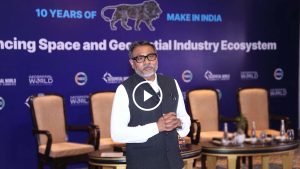The Agro-Climatic Planning and Information Bank (APIB) was created with Agriculture reform through new technology being the need of the hour. Space and geospatial technologies can aid Information and communication technology to help establish agricultural management systems for efficient and sustainable agricultural planning.
APIB provides single-window access to all agricultural-related information and decision support to users of agricultural and allied sectors. Its comprehensive database structure contains information on both spatial and non-spatial elements, such as soil quality, fertilizers use, plant protection, seeds/seedlings, climatological data, credit/insurance schemes available, infrastructure for processing and marketing, and demographic details.
Multiple parameters have been studied and recorded on the APIB using Geospatial tools and technologies, that includes Soil Mapping, Dominant Crop Types, Land use, Land degradation, Geomorphology, Groundwater Potential, Irrigated / unirrigated land areas, soil physicochemical properties, terrain characteristics, and agro-meteorological data.
Solution and Implementation
In a GIS environment, a study of different field areas was carried out using ground maps, field observation, and high-resolution IRS multispectral and multi-temporal images.
Large-scale mapping (1:10,000) was deployed for mapping spatial features in agricultural areas, and 1:50,000 scale maps for forest and steep hilly areas.
This was followed by the generation of a Natural Resources databank at the respective scales for 18 themes. The final land use land cover maps of the area were generated by GIS-based integration of two seasons’ land use maps.
Visual Analysis of Satellite False Colour Composite (FCC) for Soil resource mapping is carried out following a sample strip approach supported with high-intensity soil observation. Characterization of soils in the study area with respect to physio-chemical properties was done by laboratory chemical analysis of model profiles and soil samples collected during the field survey.
On GIS, soil maps and soil characteristics are linked leading to the generation of digital soil and soil attributes maps. The land degradation map of the study area was then prepared by visual analysis of multi-spectral data. 28 categories of land degradation were considered, identified, and mapped, including different kinds of eroded lands; open/degraded forest; waterlogged; steep sloping barren areas; landslide-affected areas; and scrub lands.
Stakeholders Involved
Farmers, Financial Institutions, Agro-based industries and traders, extension officials, researchers/consultants/journalists, state, and ground-level administration in the districts of Champawat, Dehradun and Tehri-Garwal of Uttarakhand, India










